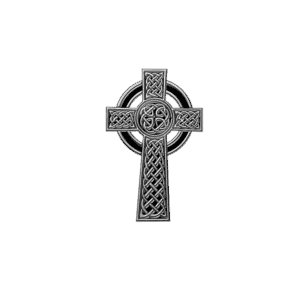The Flamenco Guitar: Strumming the Soul of Spain – A Cultural Symphony

Updated On: May 08, 2024 by Yasmin Elwan
The Flamenco guitar’s resonant strings vibrate against its polished wood, echoing the heartbeats that pulse through the veins of Spain’s rich cultural heritage. This instrument doesn’t merely produce music; it encapsulates the fervour and the passion of a people, becoming almost a living, breathing entity in the hands of a skilled player. As a centrepiece in Flamenco music, the guitar is an emblem of emotional expression, where every pluck, strum, and tap articulates stories of joy, sorrow, and the vibrancy of Spanish life.

Leading the charge in Flamenco’s melodic storytelling, the Flamenco guitar navigates between thunderous rhythms and delicate melodies that dovetail with the powerful vocals and intricate footwork of dancers. Its design, tuned specifically for the flamenco genre, boasts a lighter build and thinner soundboard to amplify its distinctive sound. Each guitar serves as a testament to a long lineage of craftsmen and musicians who have honed the craft across generations, allowing the instrument to evolve yet preserving its soulful essence.
Investigating the nuances of this profound instrument reveals the structural ingenuity behind it, as well as the techniques that define its playability. As Flamenco continues to capture hearts globally, the guitar stands as a symbol not just of a genre but also of the indomitable Spanish spirit that continues to inspire and move audiences worldwide.
The Origins and History of Flamenco

Flamenco is an evocative art form rooted deeply in the cultural melting pot of Andalusia. It stands as a testament to a rich legacy shaped by various peoples and historical moments.
Influences and Cultural Roots
Flamenco originated in the southern region of Spain known as Andalusia, where cultures such as the Gitanos (Roma), Moors, Christians, and Sephardic Jews converged, each bringing their unique musical traditions. The Gitanos are often credited with the development of flamenco, synthesising the diverse cultural influences into the powerful expressions of song, dance, and guitar that characterise flamenco today.
Evolution Through Time
By the late 18th century, flamenco began to take on a more formalised structure with the rise of the café cantante, a type of coffeehouse where flamenco shows were performed. Moving into the 20th century, the tablao replaced the café cantante as the epicentre of flamenco performances. Flamenco faced challenges during the Civil War and the subsequent Franco dictatorship, which suppressed regional cultures. However, during the post-war economic boom, flamenco experienced a resurgence. In 2010, UNESCO declared flamenco as one of the Masterpieces of the Oral and Intangible Heritage of Humanity, cementing its global cultural significance.
Fundamentals of Flamenco Music
We find that flamenco music isn’t just an art form; it’s the very soul of Spain, encapsulating emotion and tradition in its rhythm and melodies. It’s vital to grasp the intricate components of this music to fully appreciate its depth.
Understanding Palo
Palo refers to the different categories within flamenco music, each with its specific set of rhythms, chord progressions, and moods. These are crucial in conveying the varied emotional spectrum of flamenco. The Palos guide musicians and dancers, creating a framework that channels the intense feelings associated with this art form.
The Role of Cante, Baile, and Toque
Cante is the vocal expression within flamenco, often deeply emotional, reflecting themes of love, loss, and celebration. The singer, or cantaor, is pivotal in setting the tone and narrative of a performance. Baile, the dance aspect, is more than mere movement; it’s a passionate and intricate display, a visual extension of the music. Through toque, the guitar-playing, we witness a blend of complex rhythms and techniques that support and interact with both cante and baile, forming a cohesive and dynamic spectacle.
Flamenco Guitar Characteristics
When we explore the flamenco guitar, we observe a distinct combination of woods and construction techniques which contribute to its signature sound and playability.
Selecting Wood Types
The choice of wood significantly affects the sound of a flamenco guitar. Traditionally, spruce is used for the top plate due to its ability to offer a bright and sharp sound, which is essential for the piercing quality of flamenco music. For the back and sides, cypress is commonly preferred, imparting a crisp, snappy tone. However, woods such as Indian rosewood and cocobolo are also opted for, delivering a deeper, richer resonance.
Guitar Construction and Design
The flamenco guitar’s construction and design elements have been honed over centuries, influenced by luthiers such as Antonio de Torres Jurado. A standard flamenco guitar is designed to be lighter, with thinner tops and less internal bracing, resulting in a very responsive, percussive sound. Techniques such as golpe, where the player taps the top of the guitar, are accommodated by a slightly lower action and the inclusion of a tap plate to protect the wood. The overall design provides for a quick, immediate response suitable for flamenco’s intricate rhythms and techniques.
Playing Techniques of Flamenco Guitar
Flamenco guitar is not only about the melody; it’s the percussive beats, the dynamic rhythms, and the rapid-fire flourishes that give it a unique identity. We’ll explore some of the core techniques that are the essence of this passionate musical style.
Rasgueado and Golpe
Rasgueado is a strumming technique where the fingers are flicked outwards from the palm, rapidly striking the strings to create a vibrant, rhythmical sound. It’s a hallmark of Flamenco music and requires significant dexterity. The Golpe technique complements Rasgueado by providing percussion. A Golpe involves tapping the surface of the guitar with the fingers or the palm while strumming, imbuing the melody with a sharp, rhythmic accent. These two techniques often work in tandem to drive the relentless rhythms of a Flamenco performance.
- Rasgueado: Strumming with outward flicks of the fingers for rhythm
- Golpe: Percussive tapping on the guitar body for accents
Picado and Arpeggios
Moving to the melody, Picado refers to the precise, staccato plucking of individual strings. The technique involves alternating index and middle fingers with control and speed, enabling a Flamenco guitarist to articulate rapid-fire melodic runs. Arpeggios in Flamenco are not just mere finger-picking patterns. They are an intricate weave of notes from a chord, played individually in rapid succession, often incorporating both picado and golpe within the flow of the Arpeggio to maintain the rhythm and colour of the piece.
- Picado: Staccato plucking with alternating fingers for melody
- Arpeggios: Rapid succession of chord notes interlaced with rhythm
Rhythmic Foundation of Flamenco
The rhythmic framework, known as compás in Flamenco, is not merely a beat but the heartbeat of the entire performance. It governs the dancer’s steps, the singer’s cadence, and the guitarist’s strums, serving as a complex rhythmic structure that underpins melodies and harmonies. Now, let’s explore the intricacies of this essential Flamenco element.
Understanding Compás
The compás is a recurring cycle of beats with accents that may seem irregular to those unfamiliar with Flamenco’s unique time signatures. A fundamental concept to grasp is that each Flamenco style, or palo, has its own characteristic compás. For instance, the Soleá, one of the most fundamental palos, typically moves in a steady 12-beat pattern with a specific emphasis on the 3rd, 6th, 8th, 10th, and 12th beats, making it a prime example of the complexity within Flamenco rhythms.
In learning the compás, enthusiasts must appreciate the layers of sound and how they mesh together. As they progress, they develop an intuitive understanding, which allows them to feel the rhythm rather than just count the beats. Our guides to Flamenco rhythms offer insights and tools for those eager to learn more about Flamenco’s rhythmic foundation.
Incorporating Palmas
Hand clapping, or palmas, is a percussive accompaniment crucial to the expression of Flamenco music. Palmas can be sordas (soft) or fuertes (loud), the former providing a mellow, muted sound, while the latter are a sharp, assertive clap that cuts through the music. The palmas performer typically follows the compás, adding layers and contrasting rhythms that enhance the dancer’s and musician’s performances.
Understanding when and how to incorporate palmas is key to contributing to the overall Flamenco piece. It’s an art in itself, demanding precision and the ability to complement the complex rhythm without overshadowing it. Those who master palmas become an integral part of the Flamenco ensemble, interweaving their rhythmic patterns seamlessly with the music and dance. For a foundational understanding of these elements, enthusiasts can utilise resources such as this guide for introducing Flamenco rhythms and palmas.
Emotional Expression in Performance
In Flamenco, the guitar is not merely an instrument; it acts as a conduit between the audience and the rich tapestry of emotions woven through each performance.
Interplay Between Musicians and Dancers
The relationship between musicians and dancers is akin to a passionate dialogue. We see guitarists responding to the dancers’ movements, their strummed chords and plucked notes accentuating each stamp and twirl. The musicians’ ability to enhance the dancers’ performance with emotionally charged music creates a deeply empathetic connection with the audience. This symbiosis is integral, as it allows the story of love, drama, and heartbreak to unfold not just through dance but also through melody.
Conveying Emotions Through Music
The Flamenco guitar transcends its role of musical accompaniment, becoming the voice of the soul’s deepest narratives. Each rasgueado and picado is chosen to reflect an array of emotions, from the fiery ebbs of passion to the melancholic whispers of sorrow. As guitarists weave these sounds through the air, they articulate stories of life and death, transporting listeners to the heart of Spain’s most dramatic art form. Through this storytelling, each performance becomes an intimate display of human feeling, resonating with the rawest of emotional expressions.
The Flamenco Guitar in Ensemble

The flamenco guitar thrives in the company of cantaores (singers) and bailaores (dancers), creating a dynamic interplay that embodies the essence of flamenco music and dance.
Collaboration with Cantaores and Bailaores
In ensemble performances, we see the guitarist taking a pivotal role, providing the musical foundation upon which flamenco’s emotive voice and dance are built. When collaborating with a cantaor (singer), the guitarist follows the intricate vocal lines with supportive strumming patterns, often accenting the unique rhythmical nuances that define flamenco’s various palos (styles).
Working alongside bailaores (dancers), a guitarist’s role becomes even more interactive. As the dancers execute their forceful, intricate flamenco dance steps, the guitarist underscores their movements with emphatic, percussive playing that mirrors the intensity of the dance. The connection between the bailaor and guitarist is palpable; one leads and the other responds, creating a dialogue that is both spontaneous and rehearsed.
Our experience of flamenco guitar music is thus a multi-sensory journey, where the strings of the guitar not only carry melodies but also punctuate the air with the rhythm of Andalusian heartbeats.
Prominent Flamenco Guitarists and Legacies

In the landscape of flamenco, virtuoso guitarists have not only defined the soulful melodies of this art form but have also established family dynasties that continue to shape its evolution. These tocaores (guitarists) have held a profound place within Spain’s cultural expression, influencing musicians and audiences alike.
Family Dynasties and Pioneers
Flamenco has seen the rise of several significant family dynasties that have passed the torch of musical mastery through the generations. Names such as the Amaya and the Habichuela families resonate through the annals of flamenco history, each bringing their distinct style to the realm of guitar playing. They have been crucial in preserving and evolving the tradition, creating a perennial influence on the art form.
- The Montoya Family: A lineage renowned for their contribution, the Montoya family, with members like Ramón Montoya, forged a new era for solo flamenco guitar playing. They broadened the scope of the flamenco guitar beyond accompaniment, elevating it to the centrepiece of a performance.
Pioneers
Pioneers of flamenco guitar have often been ahead of their time, blending pure flamenco with other musical elements and creating sub-genres that both purists and contemporary audiences admire.
- Paco de Lucía: We acknowledge the transcendental impact of Paco de Lucía, one of the most renowned figures in flamenco history. His revolutionary techniques and international appeal have cemented him as a pivotal figure in expanding the horizons of flamenco.
- Vicente Amigo: Following in these significant footsteps, Vicente Amigo, a Grammy-winning virtuoso, merged flamenco with other genres, showcasing the versatility of flamenco to the world.
Through their remarkable passion and technical prowess, these guitarists have irrefutably shaped the legacy of flamenco, inspiring both the prestigious Musicians Institute and a myriad of flamenco players worldwide. Their indelible marks upon the fabric of Spanish music ensure that the spirit of flamenco resonates powerfully into the future.
Stylistic Variations and Fusion

The Flamenco guitar weaves through the fabric of Spanish culture, constantly evolving as it absorbs influences from diverse musical genres.
From Traditional to Modern Flamenco
Traditional Flamenco, with its rich assortment of palos or styles, such as Soleá and Alegrías, has always been the heart of Flamenco’s soulful expression. In modern times, Flamenco has undergone a transformation, as contemporary Flamenco players have pushed the bounds of tradition, infusing new life and creativity into this ancient art. Flamenco’s modern evolution incorporates broader musical structures while still respecting its traditional core, creating a dialogue between the past and the present.
Influence of Jazz and Other Genres
Jazz, known for its improvisational prowess and complex harmonies, has left a distinctive mark on Flamenco music, resulting in the emergence of Nuevo Flamenco. This fusion brings with it a refreshing spontaneity and a mix of rhythmical patterns that can be heard in stylings such as the Rumba, which itself is a product of cross-cultural interaction. Other genres influencing Flamenco include various forms of Latin music, leading to vibrant and eclectic styles that reflect a global connection while maintaining the passionate essence of Spanish Flamenco.
Technique Development and Education
To master the flamenco guitar, one must engage in focused technique development, often through structured learning from guitar academies or leveraging comprehensive online resources.
Guitar Academies and Online Resources
In our journey to becoming proficient flamenco guitarists, we recognise the crucial role of established guitar academies. These academies provide a structured environment where we can learn from experienced flamenco players. They typically offer a curriculum that covers a vast range of topics, from basic hand positioning and strumming patterns to complex falsetas and scale work. For instance, musicians institutes with a focus on flamenco invest significantly in developing improvisation skills, ensuring we can express our individuality through music.
On the other hand, our exploration of flamenco does not have to be confined to physical institutions. Online resources abound, offering tutorials, courses, and interactive lessons that are easily accessible from anywhere in the world. These platforms cater to all levels of expertise and often provide step-by-step guidance on various techniques, including the intricate finger movements essential for rasgueado or the lightning-fast picado. This virtual landscape also allows us to connect with a global community of flamenco enthusiasts, further enriching our educational experience.
The Global Impact of Flamenco

Flamenco has transcendentally strummed its way from the heart of Andalucía to stages across the world, becoming a vibrant ambassador of Spanish culture.
Flamenco on the World Stage
Flamenco’s intense passion and powerful rhythms have resonated globally, securing it a place on the UNESCO Intangible Cultural Heritage List. Our exploration into its worldwide influence unveils flamenco as more than just dance or music – it’s a subculture that has woven its spirit into a tapestry of global artistic expression. When we speak of flamenco guitar music, we discuss a genre that has been robust in maintaining authenticity while inspiring a plethora of artists beyond Spain’s borders.
Frequently Asked Questions

In this section, we explore some of the most commonly asked questions about the iconic Flamenco guitar, revealing its unique playing techniques and its distinctions from the classical guitar and providing avenues for learning its mesmerising strumming patterns.
What is the distinctive strumming technique of flamenco called?
The distinctive strumming technique used in flamenco music is known as ‘rasgueado’ or ‘rasgueo’. This involves rapidly fanning out the fingers from the strumming hand across the strings, producing a lively, rhythmic sound.
How does flamenco guitar differ from classical guitar?
Flamenco guitars are crafted to produce a sharper, more percussive sound compared to classical guitars. They are typically lighter, with thinner tops and less internal bracing, which contributes to their unique tonal qualities.
What terminology is used to describe a flamenco guitarist?
A flamenco guitarist is often referred to as a ‘tocaor’ or ‘guitarrista’. This terminology specifically denotes a guitarist who specialises in the flamenco style.
Could you outline the basics of flamenco strumming patterns?
Flamenco strumming, or ‘rasgueado’, consists of several patterns, such as the four-stroke pattern and the triplet pattern. These involve coordinated strokes with the back of the fingernails across the strings.
Where can one find instructional materials on flamenco guitar strumming?
One can find instructional materials on flamenco guitar strumming through online resources. A guide to Flamenco Guitar lessons on Skillshare offers lessons that are structured to teach the fundamental techniques and melodies.
What are the key characteristics of rumba strumming in flamenco music?
Rumba strumming in flamenco is characterised by its rhythmic and buoyant quality. This approach often alternates between the downstrokes with the thumb and upstrokes with the index finger, creating a compelling and danceable groove.






